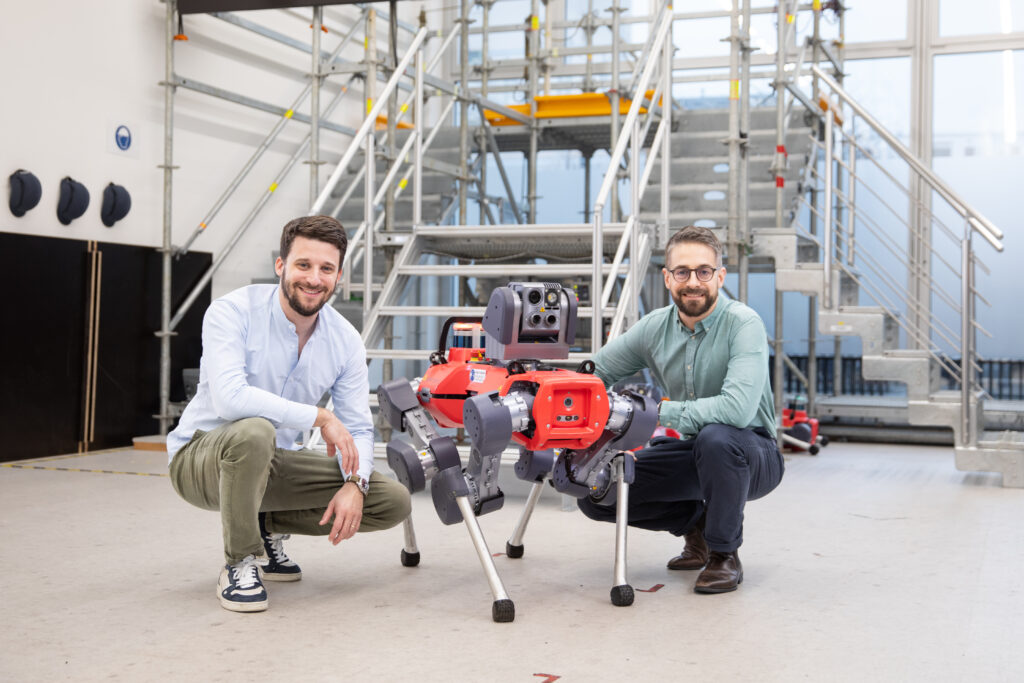
One year ago, we announced the Qualcomm Ventures 5G Ecosystem Fund, launched to invest up to $200 million around the globe in companies developing innovative solutions across the entire 5G value chain. This includes three key investment focus areas: innovative 5G use cases, fostering 5G network transformation, and end-to-end innovative connectivity models for enterprises.
We were excited about this initiative because we understood the magnitude of the societal impact 5G could have. A study done by IHS Markit in conjunction with Qualcomm Technologies, Inc. estimates that by 2035 5G will enable $13.2 trillion of economic output and support 22.3 million new jobs. As the venture capital arm of the world’s leading wireless technology innovator and the key driving force behind the development, launch, and expansion of 5G — Qualcomm Ventures has a front-row view of the research and technology behind 5G, which gives us a deep understanding of its potential. This expertise in 5G has allowed Qualcomm Ventures to be a first-mover in the 5G start-up community, investing in groundbreaking 5G-focused companies like Affirmed Networks, Inc., Altiostar Networks, Inc. and Airspan Networks, Inc., even before the launch of the 5G fund.
Much has happened in the world since the launch of the fund 12 months ago. The unprecedented crisis of the COVID-19 pandemic has fundamentally shifted how we live and do business in ways that are shining a spotlight on the critical need for reliable, fast, and secure connectivity.
The trends driving innovation in the 5G ecosystem and adoption of 5G technology beyond smartphones have, if anything, only accelerated. Remote work, telemedicine, online education, and even internet-connected home gyms have become commonplace, a manifestation of structural changes in consumer behavior that is driving demand for networking to unprecedented levels and shining a spotlight on the critical importance of connectivity.
So, one year into the Qualcomm Ventures 5G Ecosystem Fund, the Communications industry is in an even better position to deliver the technology the world needs to become more resilient and connected for society’s benefit. Across the globe today, there are more than 95 operators in more than 40 countries that have launched 5G networks.
The core ambition of our 5G Fund is to accelerate the growth of the entire 5G ecosystem because, as exciting as the possibilities of 5G are, the promise of this revolutionary new technology will require a collective effort to be fulfilled.
We are proud to announce new investments in four pioneering companies as part of that mission, to encourage the development of a broad swath of innovation ranging from foundational technology providers to application developers:
Celona, based in the Bay Area, is pushing the boundaries of wireless connectivity across enterprises. The company has developed a unique solution architecture, integrating all ingredients required to deploy a private mobile network and making LTE and 5G fully consumable by companies of different sizes.
This concept is potentially transformational: Private 5G networks have the potential to become the preferred approach to deliver wireless connectivity for a broad set of use cases in the enterprise, especially in areas where critical communications is a must, such as automated guided vehicles in manufacturing, critical IoT infrastructure, outdoor environments, and public venues.
Celona’s solution combines elements of 5G, AI, and edge computing to elegantly automate how private LTE/5G wireless infrastructures can be managed and with a laser focus on enterprise application quality of service. The company wants to re-invent how enterprise networks are built, making it easy to configure, operate, and troubleshoot, allowing enterprises to have more control over their network and deliver digital services with agility.
Cellwize, an Israeli company, targets the large and growing market of 5G infrastructure automation. To accommodate the performance and flexibility requirements of 5G, the network itself will have to be re-architected. As such, the emergence of smart networks — fully software-defined, hyper-automated, and pervasively virtualized — becomes foundational for the long-term vision of 5G. Services will be able to be provisioned in just a few days, as opposed to months, accommodating use cases ranging from self-driving cars to smart cities powered by millions of IoT devices. Managing such a complex environment is largely beyond human control, and therefore 5G networks must be born automated.
Founded by seasoned operators, Cellwize built a 5G-ready automation framework, capable of automating key aspects of access networks management and performance optimization, supporting complex multi-vendor, multi-radio, multi-technology environments.
Azion, headquartered in Porto Alegre, Brazil, and Palo Alto, is a fast-moving company focused on edge computing, a key technological building block for 5G.
To deliver its full promise and truly enable next-generation applications, 5G is expected to deliver ultra-low latency, which means that users of applications expect the network’s response time to be almost instantaneous — The “always-on” experience.
The combination of very low latency with the high speeds of 5G represents a key requirement for many next-generation applications, like holographic social presence, immersive gaming, remote telemedicine, tactile internet, and many others.
Utilizing an extensive network of distributed computing nodes across the Americas, Azion’s edge computing serverless model is perfectly suited to deliver low latency-sensitive applications ranging from cloud gaming and low-latency trading to location-aware marketing and e-commerce.
Pensando Systems, headquartered in the Bay Area, builds an integrated platform capable of powering software-defined cloud, compute, networking, storage, and security services to enable secure, ultra-fast environments with low power consumption.
With data speeds 10 to 20 times faster than 4G, the advent of 5G will enable data to be processed at the edge, making it more efficient and secure than sending all the data to be processed in a centralized cloud.
This in turn allows computing to migrate to where the data is, with new deployment models moving services closer to where the data is generated.
This new approach to infrastructure requires a new way to provision, orchestrate, and execute distributed services at scale, close to consumption points, yet orchestrated centrally.
Pensando’s distributed services card elegantly combines silicon, hardware, and software, that can effectively run essential networking microservices at the edge, with high data throughput performance, minimal latency, and low power consumption.
We feel privileged to have companies like Celona, Cellwize, Azion and Pensando join our 5G Fund initiative.
Our 5G Fund builds on Qualcomm’s cutting-edge 5G research and its heritage of inventing breakthrough technologies that transform how the world connects, computes, and communicates. As part of this initiative, we want to support this group of entrepreneurs in their journey to change the world.
While realizing the benefits of 5G will require the collective efforts of many, the rewards will be shared by the entire wireless ecosystem. The innovations and inventions they are building today will, in turn, power the creation of whole new industries and millions of jobs in the future.
We are proud to play a role in bringing innovations like these to life and making the full potential of 5G a reality.
(*) For more information about our 5G Ecosystem Fund initiative, go to https://www.qualcommventures.com/companies/5g



